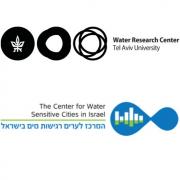New publication by Dr. Ines Zucker
Formation and degradation of N-oxide venlafaxine during ozonation and biological post-treatment
New publication of Dr. Ines Zucker , Prof. Hadas Mamane, Dr. Igal Gozlan and Prof. Dror Avisar, on "Formation and degradation of N-oxide venlafaxine during ozonation and biological post-treatment", published at Science of the Total Environment.
Abstruct:
While ozonation is considered an efficient treatment to eliminate trace organic compounds (TrOCs) from secondary wastewater effluents, the presence and persistence of transformation products (TPs) resulting from ozonation of TrOCs is a major concern that should be assessed prior to effluent discharge to the environment. Venlafaxine (VLX), an environmentally relevant tertiary amine-containing TrOC, was chosen as the model for this study. TP analysis confirmed that the lone electron pair of the non-protonated amine are the predominant site of oxidant attack, and therefore strongly affected by pH value and VLX speciation. N-oxide VLX (NOV), the primary ozone-induced TP, was formed and degraded simultaneously during ozonation of VLX-containing secondary effluent and reached a maximum yield of 0.44 to 0.85 (NOV-to-VLX0 ratio), depending on pH and hydroxyl (OH) radical presence. Rate constants for the reaction of NOV with ozone (3.1×102M-1s-1) and OH radicals (5.3×109M-1s-1) were determined. A simple kinetic model was developed to fit the kinetics of formation and degradation of NOV during ozonation in secondary effluents, based on a known ozone-reaction kinetic equation. The biodegradability of NOV (degradation rate of 39%) was significantly lower than that of the parent compound (VLX, 92%) after 71days, as evaluated by modified Zahn-Wellens tests, suggesting that N-oxide products are not better removed than the parent compound in a simulated biological post-treatment, which may even result in partial reformation of the parent compound. Lessons learned from this study were supported by a pilot-scale demonstration at the Shafdan wastewater-treatment plant, confirming the presence of NOV after ozonation and its persistence in biological post-treatment. Removal of such persistent TP will require higher dosages or promotion of OH-radicals during ozonation. Nevertheless, further assessment of the toxicity of persistent TPs relative to the parent compound is needed for complete evaluation of concerned TPs.





